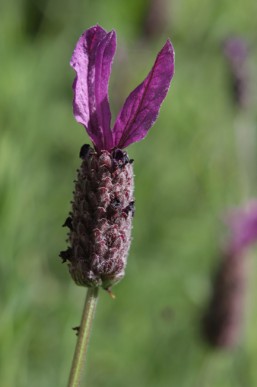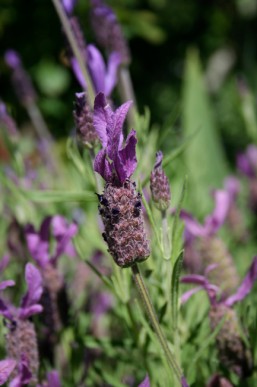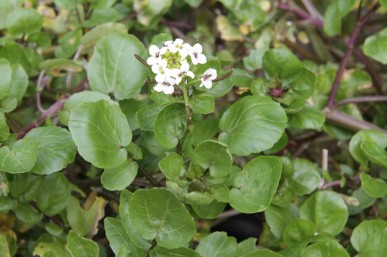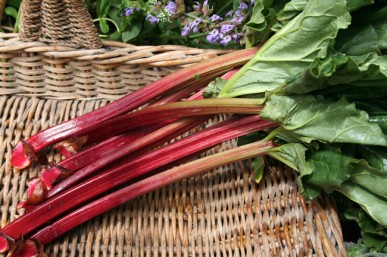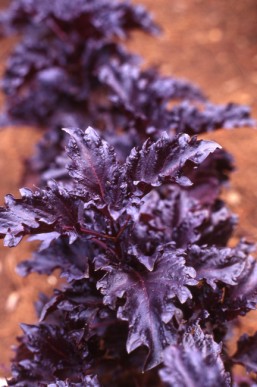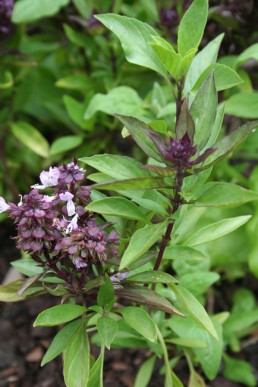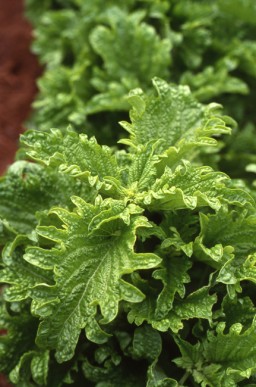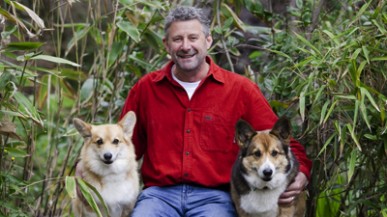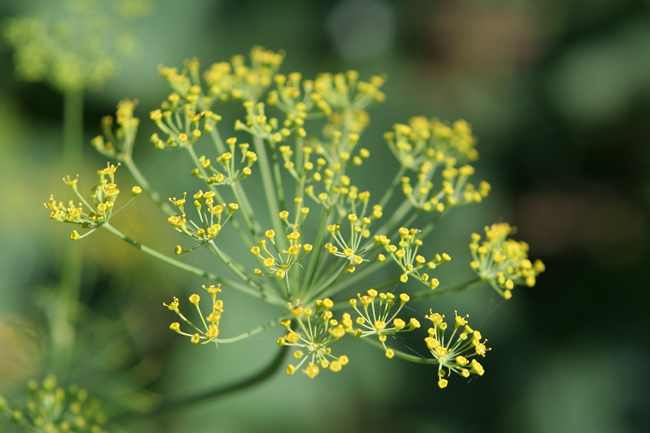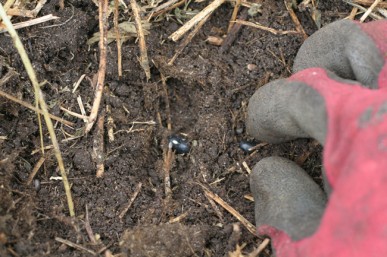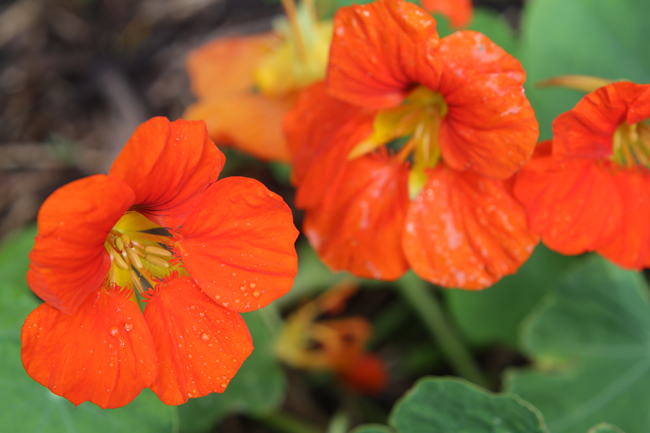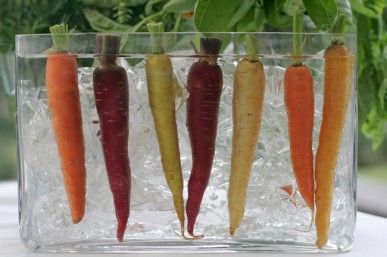In the cool of the early morning and late in the afternoon I have been tidying up my garden. We had so much rain in spring that everything grew rapidly with lots of plants being overgrown, swamping nearby plants. I am just now finding time to do something about this and while most of the garden should have been cut back weeks ago (I always seem to be running weeks behind), now is the perfect time to prune most lavenders. They have been glorious right through spring but now the flower heads have largely finished and are starting to brown off, so its time to cut them back. All the Spanish and Italian lavenders (Lavandula pedunculata and L. stoechas) benefit from an allover trim. Just hold a clump of flowers in your hand and cut back well below the flowers, taking about a third of the leafy stem as well. You should end up with a compact, shaped shrub with no flowers. One of the joys of pruning lavender is the scent, I find it makes me feel cheerful and clearheaded. Not unexpected as in aromatherapy lavender is calming and antidepressant. Continue Reading
Watercress (Nasturtium officinale) is a sprawling much-branched, aquatic, perennial plant, with a low, creeping growth habit, with heart-shaped, bright green leaflets and white flowers. Roots grow from nodes where they touch the ground. It is really easy to grow, if you buy a bunch of watercress, just plonk one piece into a glass of water and within a few days it will have produced roots. You can also grow it from seed.
Ideally watercress should be grown in running water, but it survives well in a pond, planted in a pot submerged in the water, as long as it is regularly sprayed with fresh water. Once a week is enough. Alternatively grow it in a pot sitting in another container full of water that is also regularly topped up. Watercress likes a humus-rich, fertile soil and full sun or partial shade. Once plants are growing well remove any flower heads to promote leaf growth and prolong harvest. Continue Reading
If you are an extra in a movie, providing background audience noise, you are supposed to murmur rhubarb, rhubarb, rhubarb. I don’t know where this idea originated or why rhubarb (why not cabbage, cabbage, cabbage for example!). Sometimes ‘peas and carrots’ are substituted but I do know that in Asterix the crowd always murmurs rhubarb, rhubarb, rhubarb.
Right now in gardens in Southern Australia the rhubarb clumps are thriving and many families are harvesting big bunches of stems and turning them into stewed fruit, crumbles and cakes. I have just found a new rhubarb cake recipe, it came from my sister via her friend’s grandmother and it is delicious (see the end of the article for the recipe). So, although now is not the time to plant rhubarb it is the time to harvest it and eat it. If you don’t have any, check our your neighbours’ gardens and later in the year (late winter) see if they will divide their clump and give you a piece.
Instructions for planting, growing and harvesting follow. Continue Reading
As I’ve mentioned in other posts and articles, for some time now I have been using copper tape to protect seedlings from snail and slug attack. Recently I received an email from a reader saying that he had tried it and it didn’t work. But I knew it worked well in my garden because all my seedlings were surviving even though my garden is still full of snails. But I hadn’t actually put a snail near the tape and watched what happened. So I did. The snail started to head over the copper tape, and then suddenly reared back, twisted around and made its way back down the pot. The theory is that it gives them a small ‘electric’ like shock. I was interested to see that once a snail had ventured onto the tape and received this shock, that they wouldn’t go onto the tape again. I then decided I should film it so that you could all see what happens. So I found some new snails and the rest is on the film. Thanks Dan for help with filming and editing, some bits have been sped up for effect as, well, snails can be a bit sluggish!
Nothing can compare with the first fresh sprig of basil picked in spring and if you haven’t already planted your basil, now is the time to put it in. It’s hard to believe that such a deliciously aromatic herb could have such a contradictory lineage. Basil is native to tropical and subtropical regions of Asia, Africa and Central and South America, but the main centre of diversity appears to be Africa. It has been cultivated for more than 4000 years. The sixteenth century English herbalist, John Gerard, believed that basil would stimulate the heart and ‘taketh away melancholy and maketh a man merry and glad’ but early Greek and Roman physicians said that it would only grow well if it were planted ‘amid vile shouts and curses’. In the language of flowers, basil means hatred, but it can also signify goodness and love. Continue Reading
As many of you will now know, Stephen Ryan, horticulturalist, author and broadcaster is no longer the host of Gardening Australia. It is their loss, but unfortunately ours too. Stephen is a friend, so this is not totally unbiased, but I believe that the ABC has been foolish in the way they have squandered his talents. Stephen has a knowledge of horticulture that is second to none. For more than forty years he has worked in the world of plants, winning awards and scholarships, writing books and speaking on the subject all over Australia and overseas. But instead of tapping into this ‘fountain of all knowledge’, they used him to do awkward connects between segments and to spruik a viewer’s suggestion. Such a wasted opportunity. Gardening Australia has, for so many years, worked to showcase gardening for people of all abilities. I have been gardening, and writing about gardening now a long time, and have often learnt something new from watching Gardening Australia. But not so much recently. I sense that in sacking someone as charismatic and knowledgeable as Stephen Ryan, Gardening Australia is heading down the track of the commercial stations, going for popular at the expense of informed. I guess we will know more about the trend when we see who is appointed to the new position. I hope the appointment won’t be all about style, rather than substance.
Dill, Anethum graveolens, is a delightful tall annual herb that grows to about 1 m from a taproot, with a single stem and many feathery blue-green leaves and branches. These are topped by groups of umbrella-shaped flower heads made up of small yellow flowers. The flowers are followed by flat, oval, brown seeds, which self-sow readily if left on the plant. Dill is probably one of the oldest medicinal herbs. It was used by the Egyptians before 3000 BC. The name dill is found in several old European languages, reflecting its widespread use, but its derivation is unclear. In medieval times, dill developed a reputation for protecting anyone who carried it against witches. It was a common ingredient in potions and spells and English country brides would wear a sprig of dill on their wedding day, while in Germany, a bride would put dill and salt in her shoes to bring her good luck. By the beginning of the seventeenth century dill was grown in many countries all over the world because it was known as ‘a gallant expeller of wind’. Continue Reading
Beans are a very rewarding crop and relatively easy to grow. I love them because they don’t take up much space but within a few weeks you can harvest an abundance of crisp, flavoursome beans. Soak seeds overnight to increase the speed of germination. Just put the seeds you want to plant into a bowl and cover with water. The next morning, water the soil where you are going to put the beans and plant seeds two at a time pushing them about 4cm into the soil. I always plant two because often one will not grow. Cover with soil but don’t water as the soil and the seeds are already wet. If you don’t soak the seeds then you will need to water. Leave about 20cm between plants if they are dwarf forms, or 15cm if they are climbers.
One of the most cheerful plants in my garden at present are the nasturtiums (Tropaeolum majus). The bright yellow, orange and red flowers are jewel-like highlights, scattered around the garden, in odd spots, tumbling over other plants. Nasturtiums grow easily from seed sown where they are to grow and once established they will grow, flower and set seed for months. Intense heat, or later cold and frost kill them off but in my garden they reappear every spring, colonizing waste spaces and protecting soil until I am ready to pull them out and plant something else. The only work involved in looking after them is to keep them under control. Any plants that you don’t want are simply pulled out and added to the compost where they rapidly break down. Continue Reading
The early Romans grew purple and white carrots, but it is believed that the first purple carrots came from Afghanistan, Pakistan and northern Iran. Purple, white and yellow carrots were imported to southern Europe in the 14th century and were widely grown in Europe into the 17th Century. Our familiar orange carrots only appeared in 16th century Holland when patriotic Dutch growers used seed from purple carrots and yellow Turkish carrots to produce orange roots, reflecting the colour of the ruling House of Orange. Over the ensuing centuries, orange carrots came to dominate and carrots of other colours were only preserved by growers in remote regions of the world. Purple and white carrots still grow wild in Afghanistan where they are used by some tribesmen to produce a strong alcoholic beverage. Continue Reading

